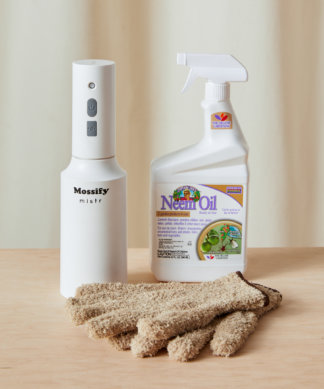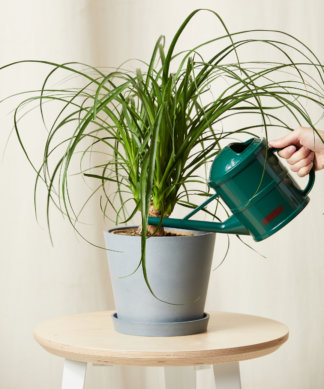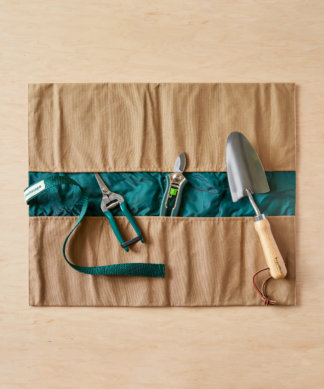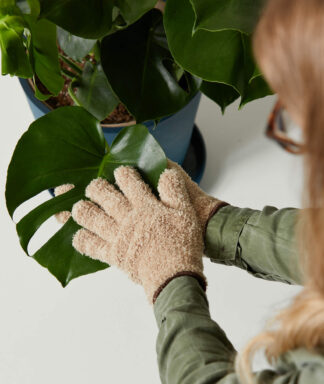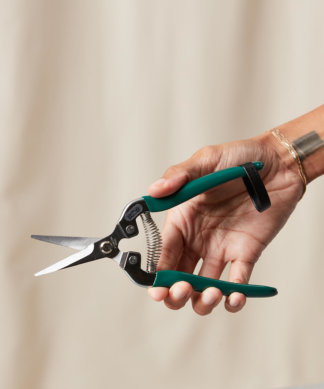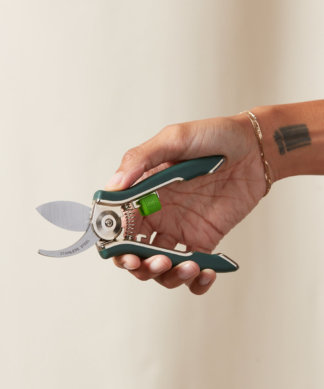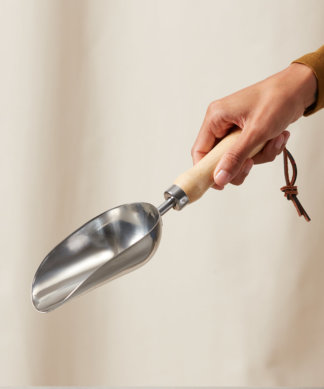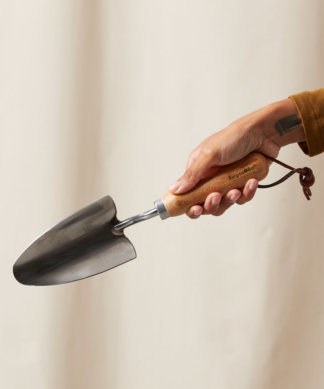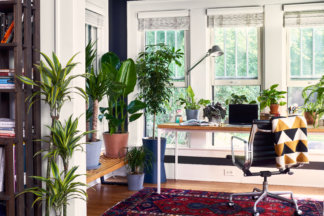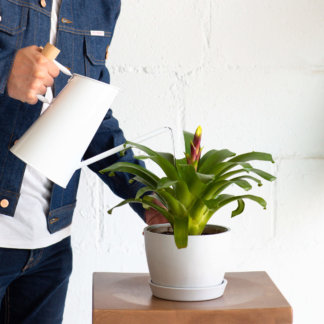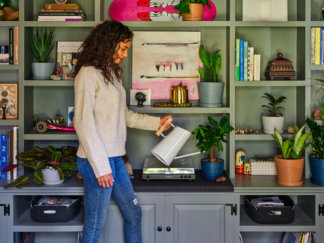Plant Care
6 Tips To Properly Water Your Plants
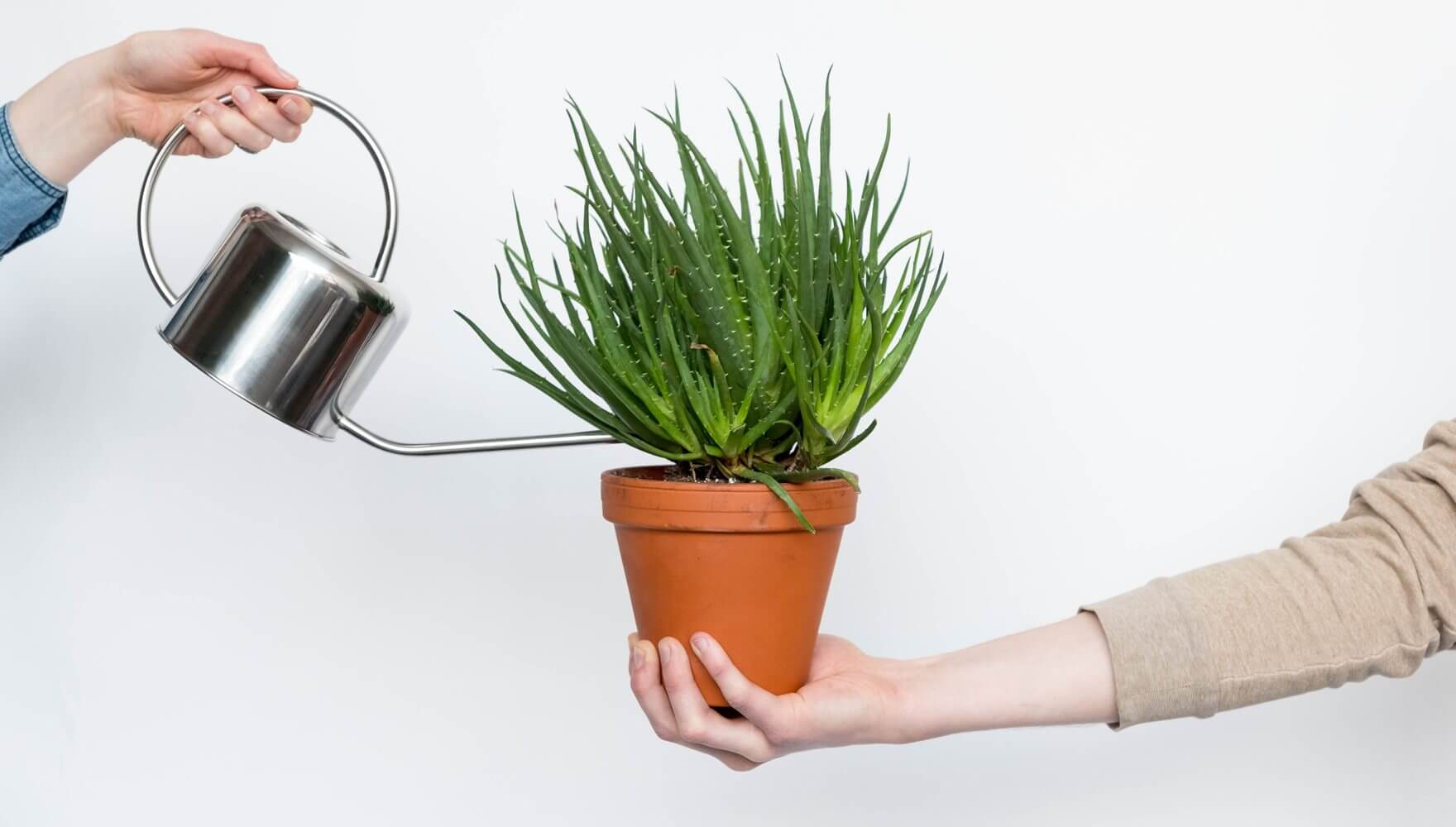
Knowing when and how to water potted plants is one of the most impactful and easiest ways to ensure your plants thrive in your home.
One of the most common mistakes made by new plant owners is overwatering their plants, aka death by H2O. Unfortunately, it’s possible for you to give your plants too much of a good thing!
All plants need water. The roots absorb water and fill up the plant’s cells, strengthening its fibers to produce strong leaves and stems. Along with soil moisture, oxygen is equally important to plants—this is why having porous soil is important.
When you water your plant too often, it prevents the soil from drying out between waterings. This means those oxygen-holding gaps in the soil are constantly filled with water, effectively suffocating your plant. It also makes your plant very susceptible to diseases like root rot or pests like fungus gnats, which can spell big trouble for long-term plant health.
Here’s a video tutorial on how to water your houseplants, and if you want more tips, keep reading.
How To Water Your Plants Correctly
Tip #1: The plant’s pot matters
Most plants you buy from other retailers come in grower pots. These pots are meant to be temporary containers for your plants, not permanent homes. Plants kept in grower’s pots long-term are almost always root-bound in the container, which inhibits their growth, makes it hard to water them properly, and can make them more susceptible to disease.
To keep your plants healthy, they need pots that are the correct size for the size of the plant. The pots also need drainage holes to help the soil dry out after watering and should be on a saucer to allow you to water thoroughly and capture any excess water.
Tip #2: Plants have different water needs
Just like people, plants thrive in various moisture conditions depending on the plant type and environment. If you’re wondering how often you should water your plants, you’ll first need to learn the language of your plants to know when it’s time to water.
Succulents, for example, like to be kept on the dry side and are highly susceptible to rot if watered too frequently. Tropical potted plants like ferns and calatheas need to be kept consistently moist while other plants like to dry out somewhat between waterings.
Understanding your plant’s unique needs and preferences is key before you start watering them. For complete watering instructions for your plants, check out our A-Z Plant Care Guides for all your plant care needs.
Rather than setting a strict water schedule, it’s better to pay attention to when the soil feels dry. Make sure you use your finger or moisture meter to check a few inches below the topsoil, and if you’re not detecting any moisture, then it’s time to water.
Tip #3: Water the soil, not the leaves
It’s also important to avoid splashing the leaves when you water your plant. Make sure the spout of your watering can is below the leaves and aimed only at the soil. This easy method helps prevent bacterial infections, fungal infections, and other health issues.
Tip #4: Water thoroughly and evenly
Plants’ root systems mirror their foliage. If you only water one side, the roots and leaves will grow towards the water that’s available on that side. To keep your plant full and lush, water evenly all the way around the pot. Water thoroughly until water flows out the bottom of the pot into the saucer.
Tip #5: Dump out any excess water
Similar to how people don’t enjoy wet shoes or socks on their feet, plants also don’t like their roots to be kept in overly wet soil. When a plant’s roots sit in saturated soil for too long, your plant will eventually rot. After watering thoroughly, wait a few minutes till water runs out of the drainage hole in the saucer, then discard any excess water to avoid having soggy soil and ‘wet feet.’
Tip #6: Consider the seasons
Just like we tend to slow down in the winter, many plants will go dormant during the colder seasons by conserving energy and stalling their growth. As a result, plants require far less water than they would in the summer. This change in behavior makes it all the more important to learn the language of your specific plant and to take time to understand when it’s actually in need of watering.
Your indoor temperature is another important factor in maintaining a healthy houseplant, particularly as the seasons change. Make sure that you learn what levels of temperature and humidity your plants need and do your best to replicate those environmental conditions.
Don’t worry if you are guilty of under- or overwatering — most plants are resilient and easy to grow if you give them TLC. If you have a plant that’s struggling to thrive, our Grow-How® Team is here to help. Contact the Grow-How® Team today to get expert plant care advice on any plant.






